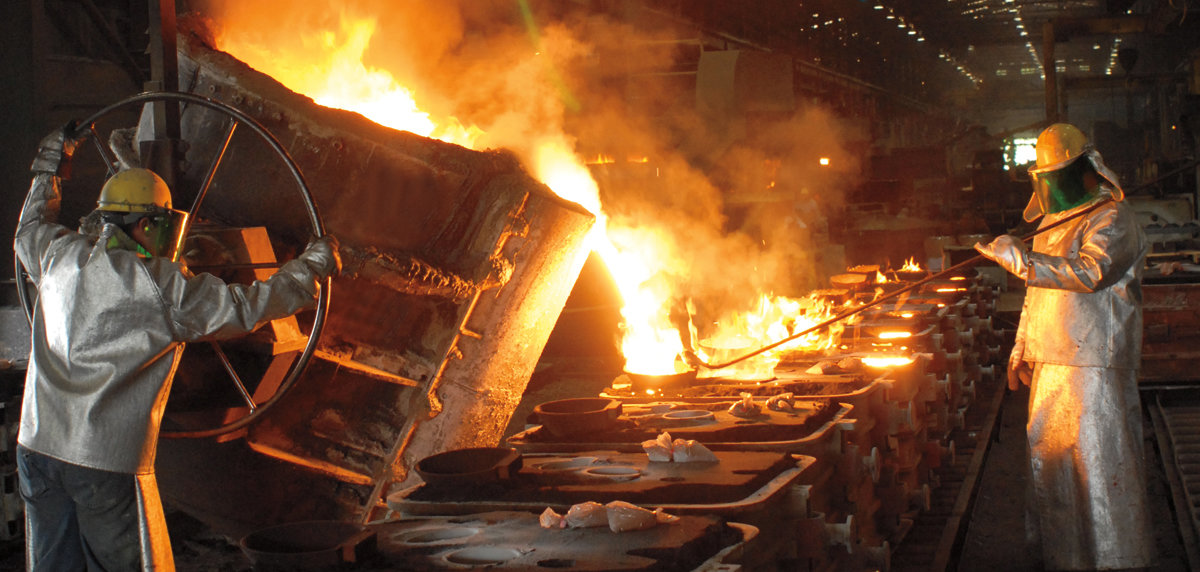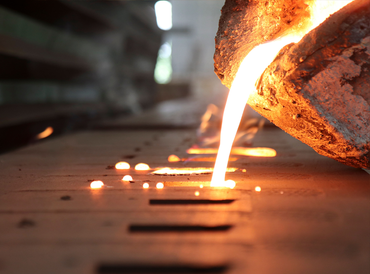Why Metal Casting drives innovation in modern manufacturing
Introducing the Intricacies of Design and Manufacturing at a Metal Foundry
The style and manufacturing processes at a metal foundry entail a series of complex actions. Each stage, from selecting resources to melting and spreading, plays an essential role in the final item. Metal Foundry. Accuracy and quality assurance are critical in this industry. As technology advancements, brand-new technologies are arising. These growths might redefine conventional techniques. What implications do these changes hold for the future of steel factories?
The Melting Process: Transforming Raw Products Into Fluid Metal
The melting process functions as the crucial very first step in changing basic materials right into fluid steel, a procedure essential for foundry operations. This stage begins with the careful choice of metals, which might consist of copper, light weight aluminum, or iron, depending upon the desired final item. Each material is reviewed for pureness and structure to ensure optimal melting conditions.

As the steels reach their melting factor, they transform from strong to liquid, enabling more refinement. This process can likewise include the elimination of contaminations via slag formation, assuring the top quality of the fluid steel. Inevitably, the successful completion of the melting process lays the foundation for subsequent metalworking operations.
Molding Techniques: Shaping Metal With Precision
Complying with the melting process, the following stage in steel foundry procedures includes molding strategies that form the liquid metal right into wanted kinds. Various approaches are used, each picked based upon the details demands of the project. Sand spreading, among one of the most common techniques, uses a mix of sand and binder to create mold and mildews that can be quickly shaped and reused. One more method, financial investment casting, entails developing a wax pattern that is coated in a ceramic covering, enabling detailed styles and high accuracy.
Pass away spreading, in comparison, uses high-pressure to inject liquified metal into steel mold and mildews, resulting in durable and consistent products. In addition, the selection of molding technique influences the cooling price, surface coating, and dimensional accuracy of the end product. Understanding these methods is essential for enhancing layout and ensuring the effective manufacturing of steel parts tailored to certain applications.
Casting Methods: From Prototype to Manufacturing
Various spreading approaches are employed in steel shops to change from model development to major production. Amongst these techniques, sand casting stands out for its flexibility and cost-effectiveness, making it perfect for both tiny and big manufacturing runs. Financial investment casting, understood for its accuracy, is often utilized for intricate geometries, permitting for great information in the final product. Die casting, appropriate for high-volume manufacturing, utilizes molten steel injected right into mold and mildews, giving outstanding surface area finish and dimensional accuracy.

Top Quality Control: Making Certain Quality in Every Pour
While the casting process can vary substantially in between techniques, preserving rigorous quality assurance is vital to identify that every pour fulfills the called for requirements. Quality assurance in a metal foundry includes a collection of systematic checks and evaluations created to identify issues early in the production process. This consists of meticulous evaluations of resources, monitoring of melting temperature levels, and evaluations of mold stability.
Foundry workers utilize numerous testing strategies, such as non-destructive screening and dimensional verification, to identify that castings achieve desired specs. Additionally, adherence to established sector requirements and certifications boosts the reliability of the last product.
Responses loopholes are likewise important; any kind of discrepancies kept in mind during quality evaluations are examined to refine processes and alleviate future mistakes. Ultimately, a society of quality control cultivates not just client fulfillment however likewise a credibility for excellence in the affordable landscape of steel manufacturing.
Technologies and Technologies: The Future of Metal Foundries
The landscape of metal factories is quickly evolving, driven by innovations in modern technology and helpful site innovative practices. Automation and robotics are transforming standard workflows, improving performance and precision throughout production. Automated pouring systems and robotic arms minimize human mistake, causing better results. In addition, the combination of expert system is enabling predictive maintenance, maximizing tools efficiency, and reducing downtime.
Additive manufacturing is becoming a game-changer, enabling quick prototyping and the creation of complex geometries that were previously unattainable. This technology assists in the personalization of metal components, dealing with particular client requirements without substantial time delays.
Sustainability is likewise a key focus, with shops adopting greener practices, such as reusing scrap steel and making use of energy-efficient furnaces. These technologies not just improve performance but also line up with global initiatives in the direction of environmentally responsible manufacturing, guaranteeing the future of metal factories remains competitive and robust in a transforming commercial landscape.
Regularly Asked Concerns
What Kinds of Metals Are Commonly Made Use Of in Shops?
Usual metals made use of in foundries consist of light weight aluminum, cast iron, bronze, steel, and brass (Aluminum Foundry). Each steel possesses special homes, making them ideal for various applications in industries such as vehicle, aerospace, and building and construction, among others
Just How Do Factories Take Care Of Waste and Environmental Impact?
Factories handle waste and ecological influence by implementing recycling programs, making use of innovative filtration systems, and adhering to strict regulative requirements. They commonly purchase lasting innovations to minimize exhausts and advertise responsible resource use throughout their operations.
What Precaution Are in Area for Workers?
Shops implement different safety actions for employees, including personal safety tools, proper air flow systems, normal security training, emergency response methods, and rigid adherence to occupational health and wellness policies to reduce risks connected with hazardous products and equipment.
How much time Does the Whole Production Refine Generally Take?
The whole production process typically takes a number of weeks, relying on the complexity of the style and the products made use of. Aspects such as mold and mildew preparation, melting, and cooling time greatly influence the overall duration of production.
What Are the Main Challenges Faced by Metal Factories Today?
Metal foundries today face obstacles such as climbing material prices, changing demand, ecological policies, competent labor shortages, and maintaining quality control. These issues make complex manufacturing effectiveness and profitability in a progressively open market.
The layout and click to read production processes at a metal foundry entail a series of detailed steps. The melting process serves as the crucial first step in changing raw materials right into fluid metal, a procedure vital for foundry operations. Adhering to the melting procedure, the next see page phase in metal foundry operations includes molding methods that form the fluid steel right into preferred kinds. Numerous casting methods are used in metal foundries to move from prototype advancement to full-scale manufacturing. Quality control in a metal foundry includes a collection of organized checks and assessments made to identify flaws early in the production procedure.